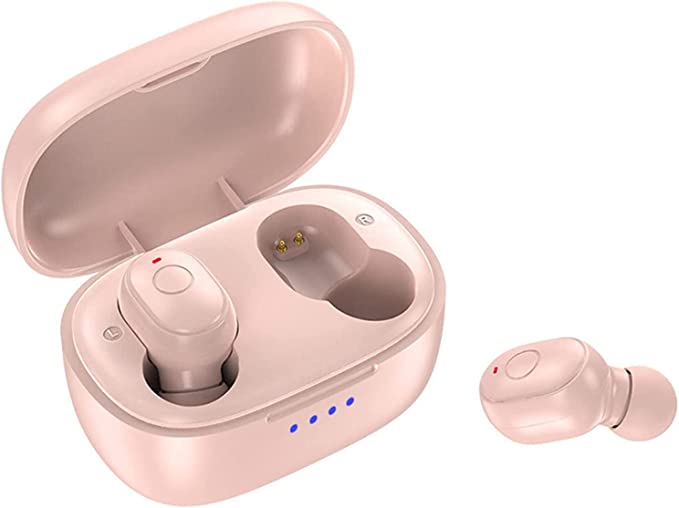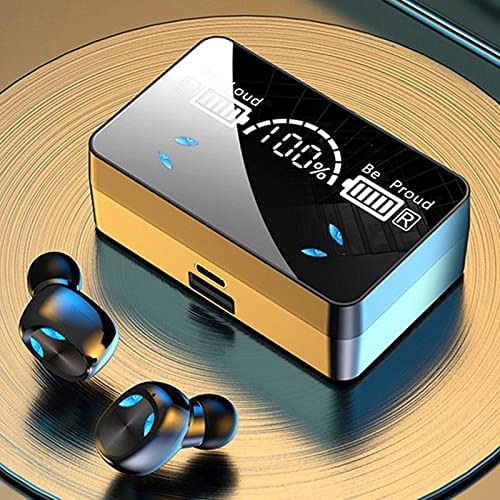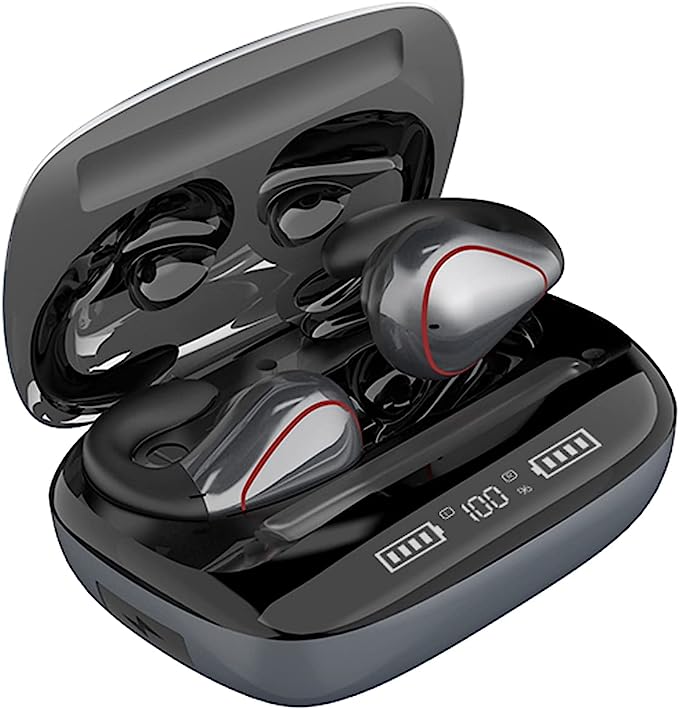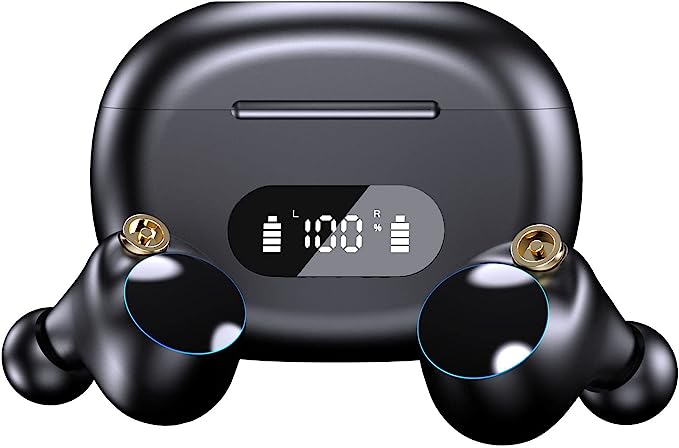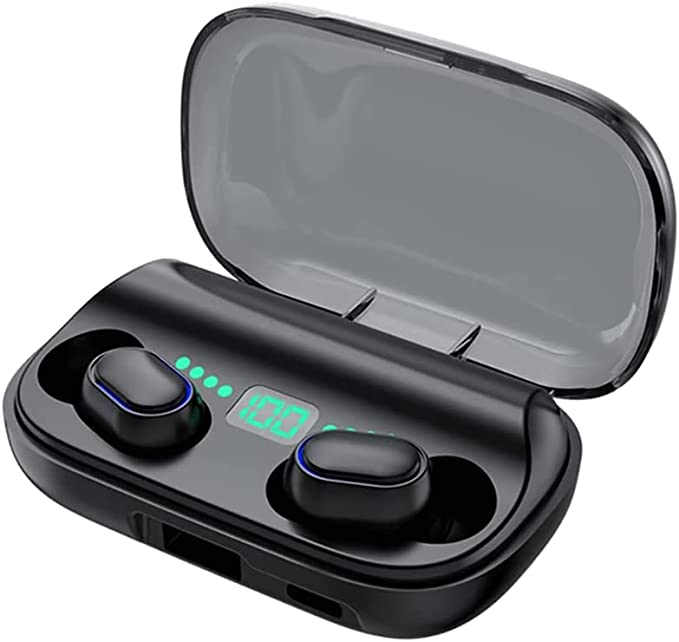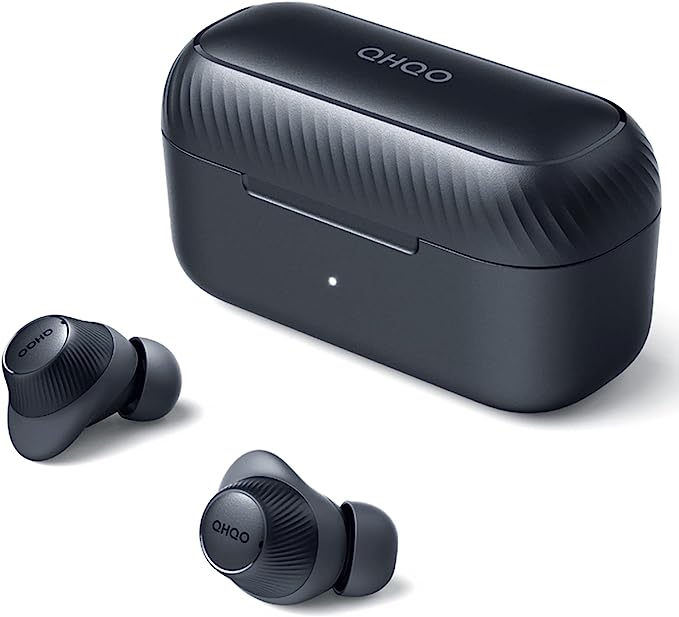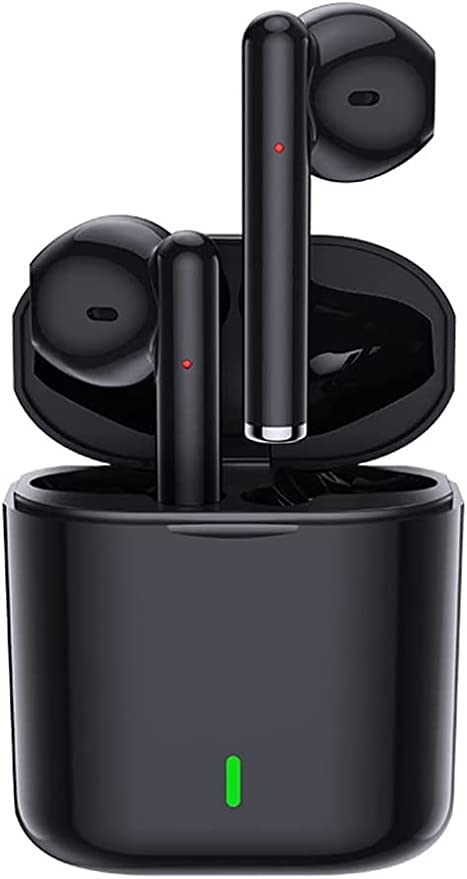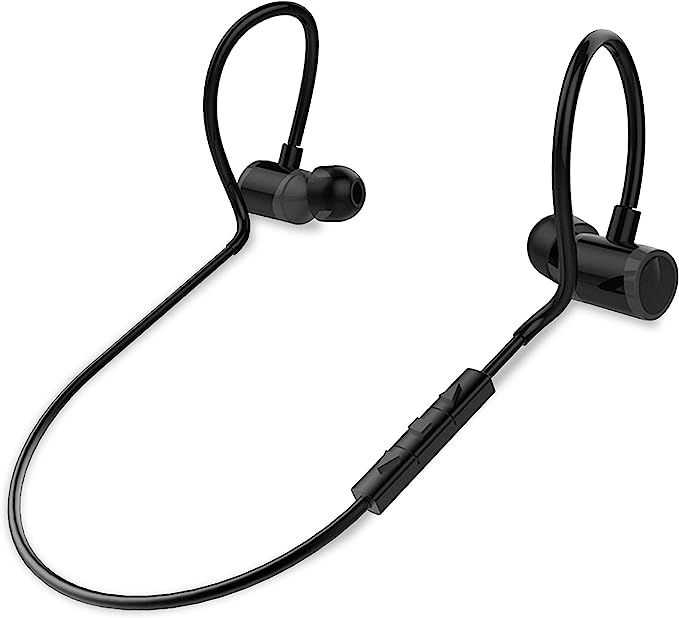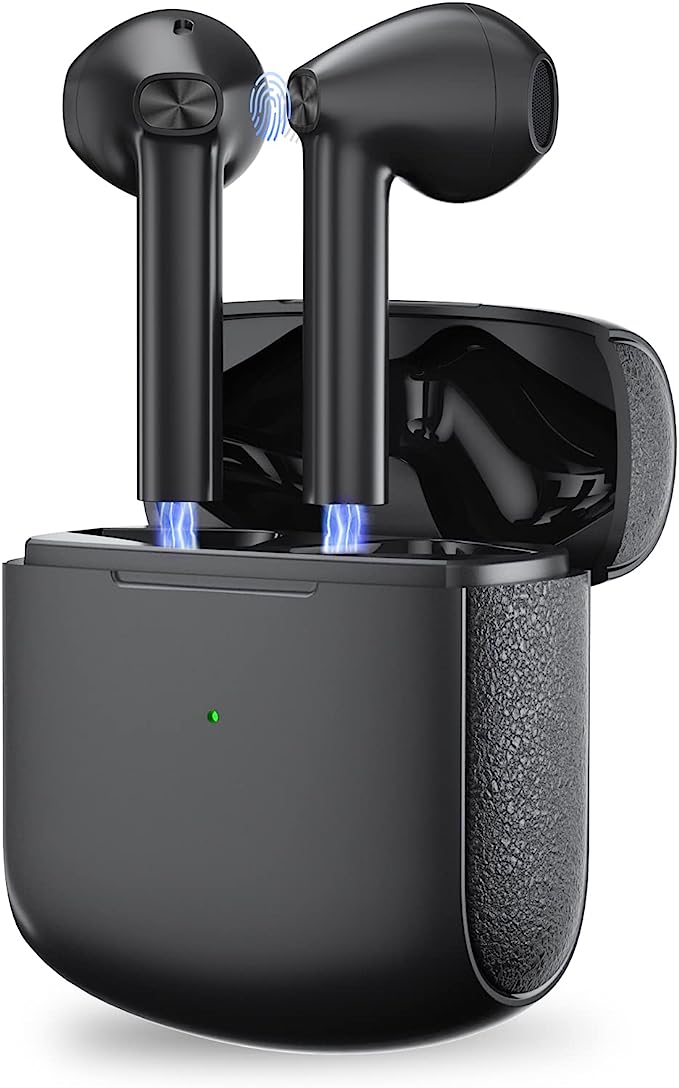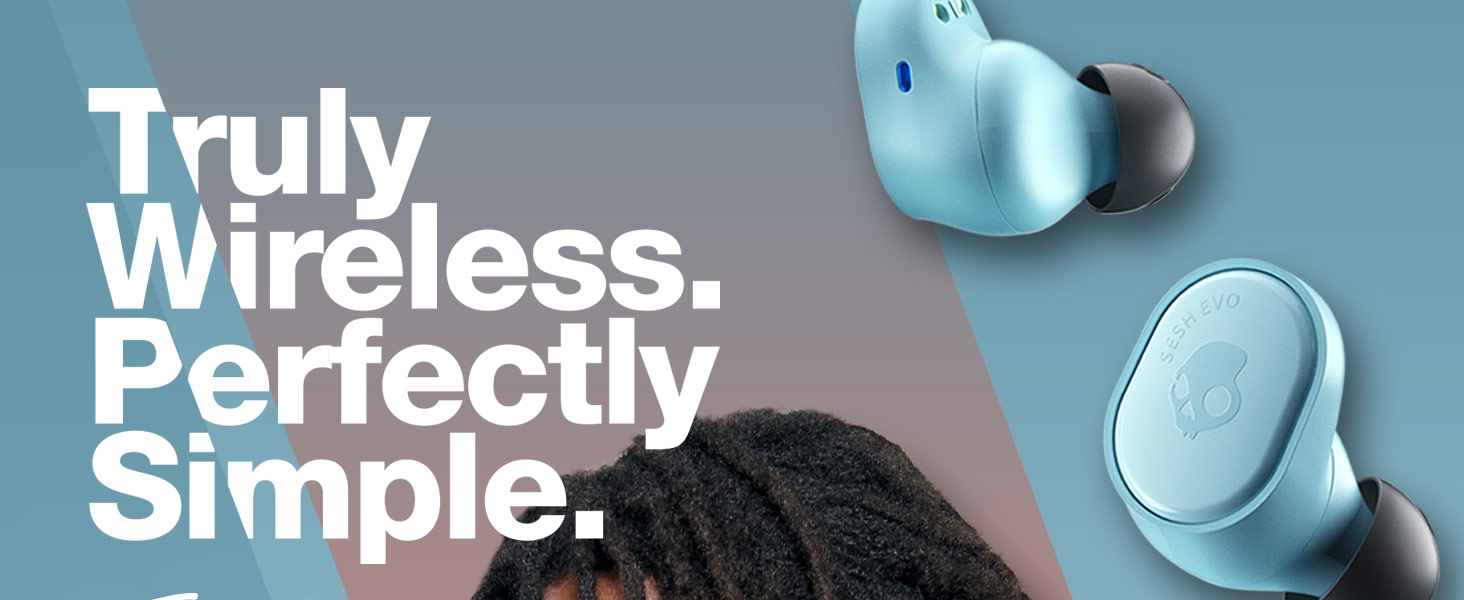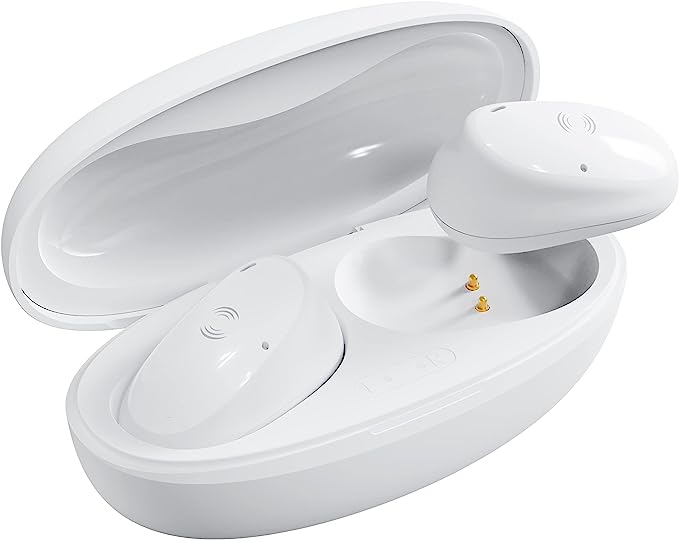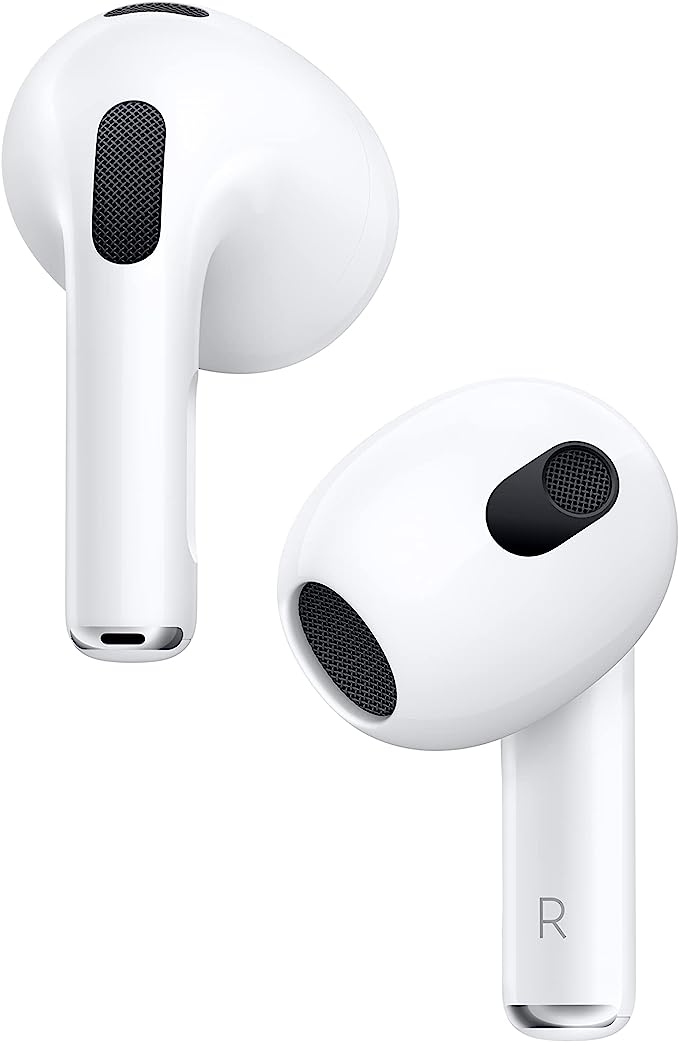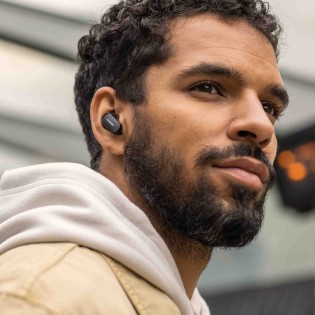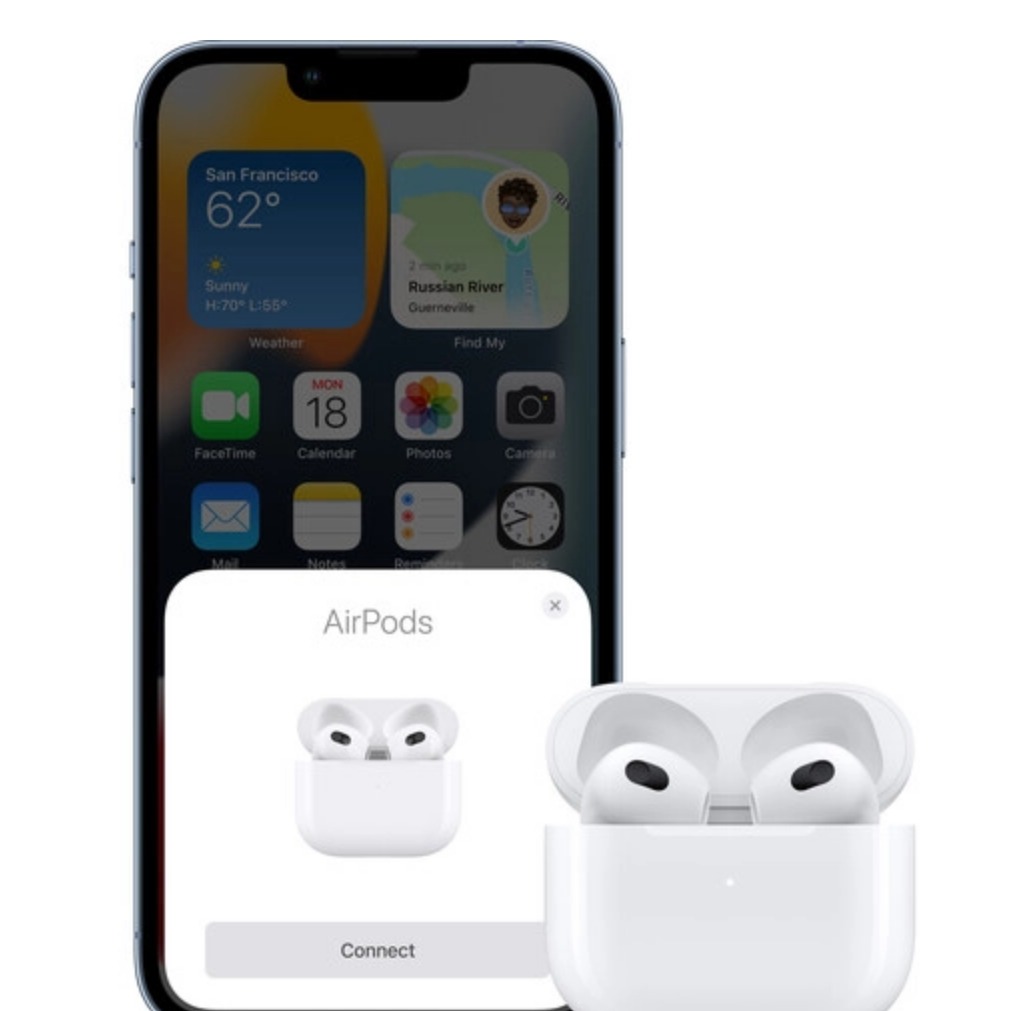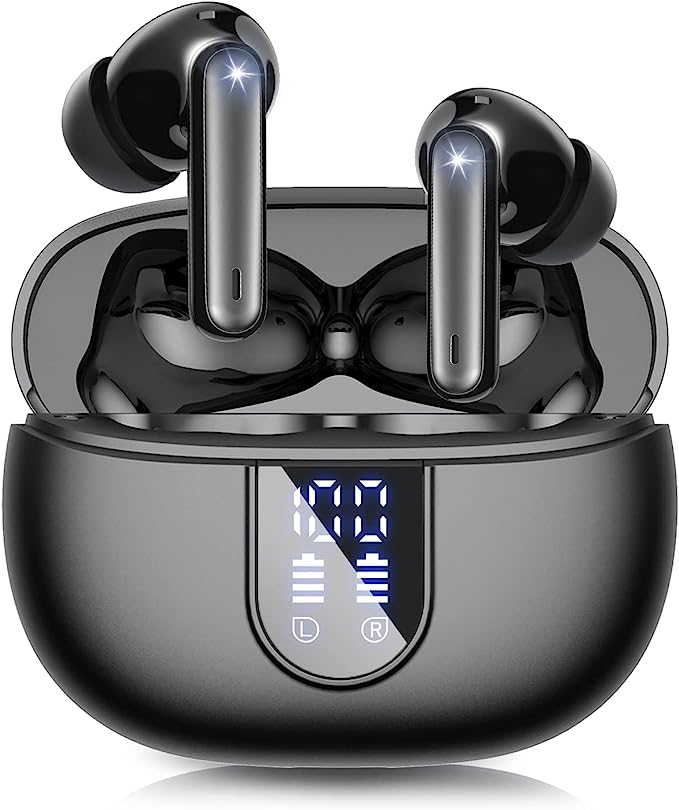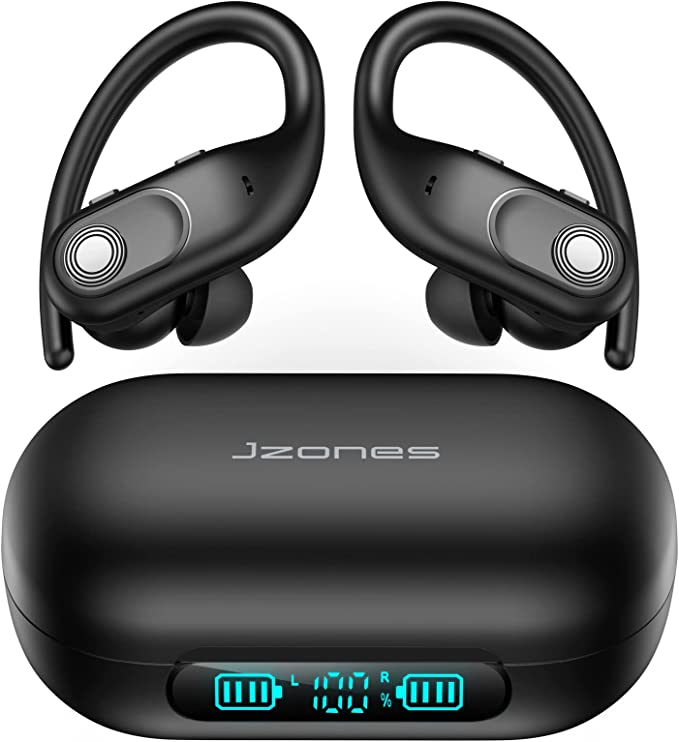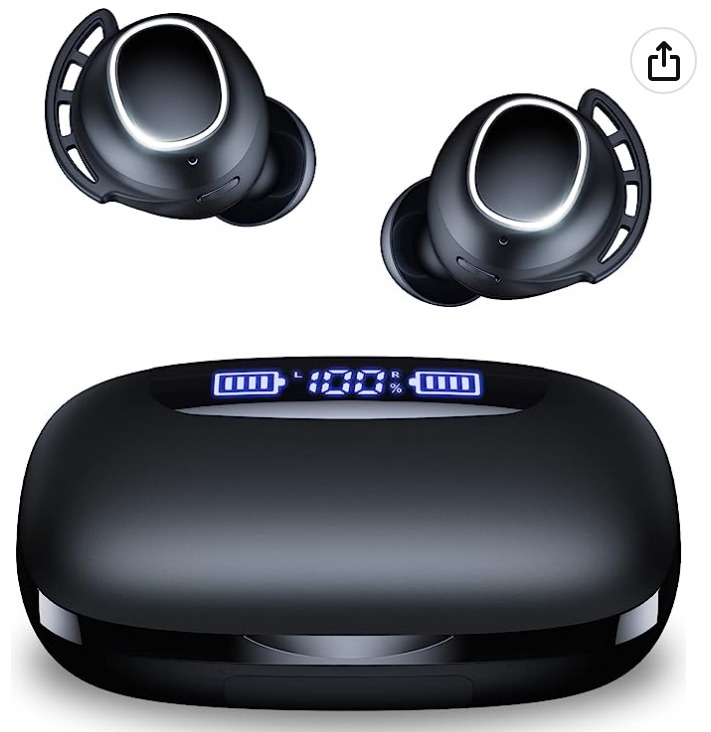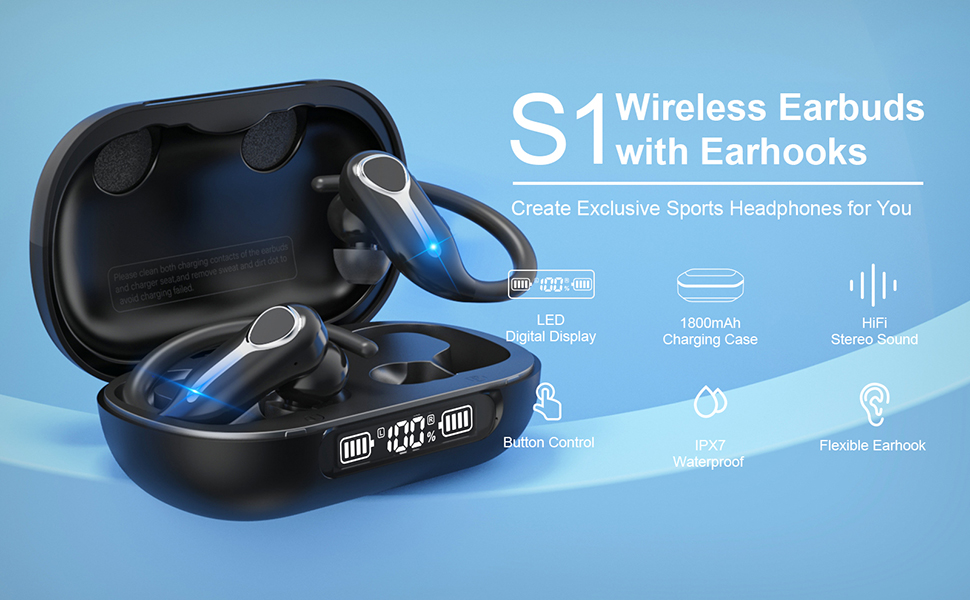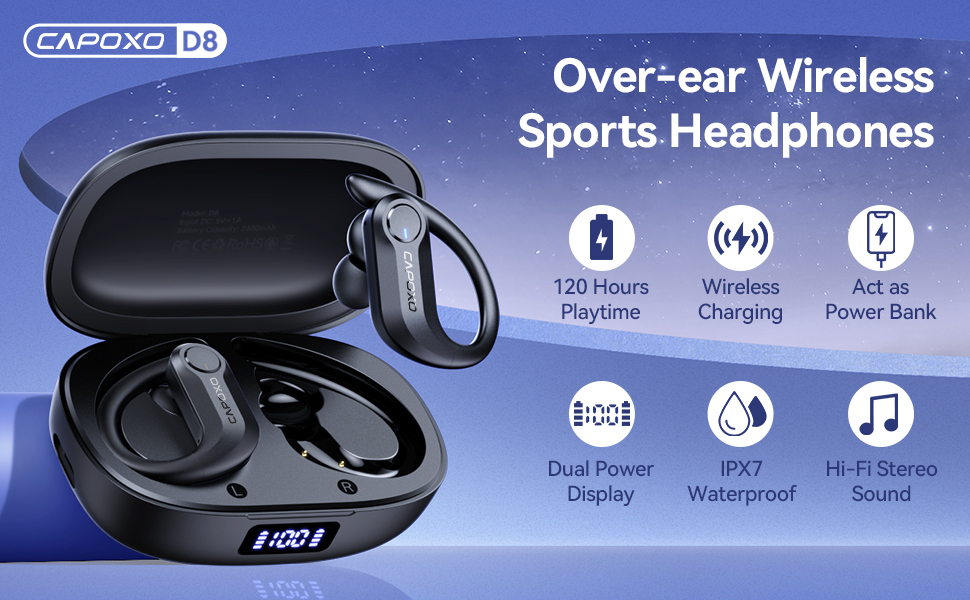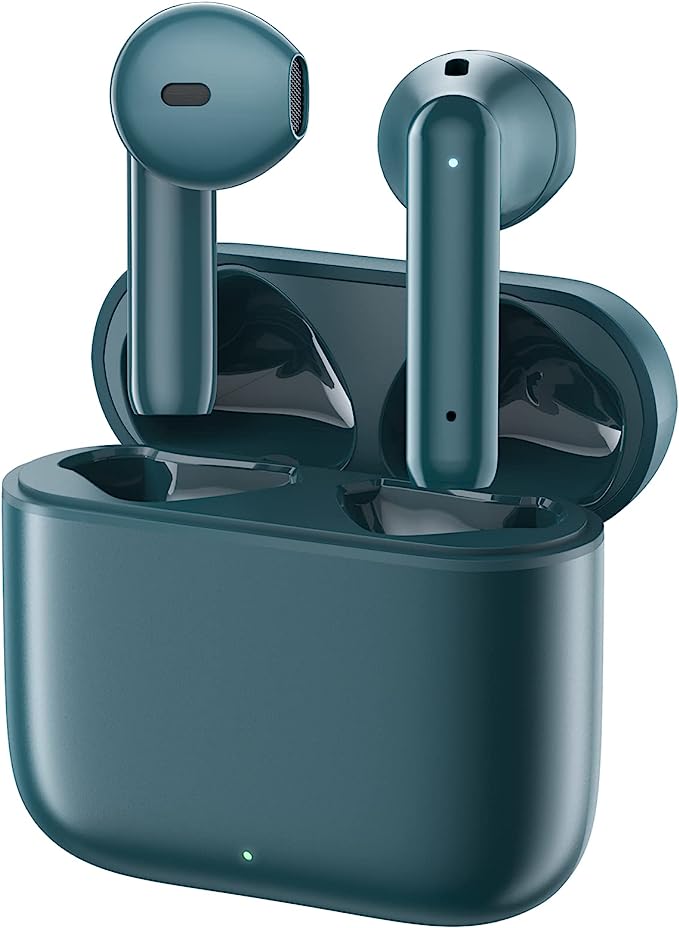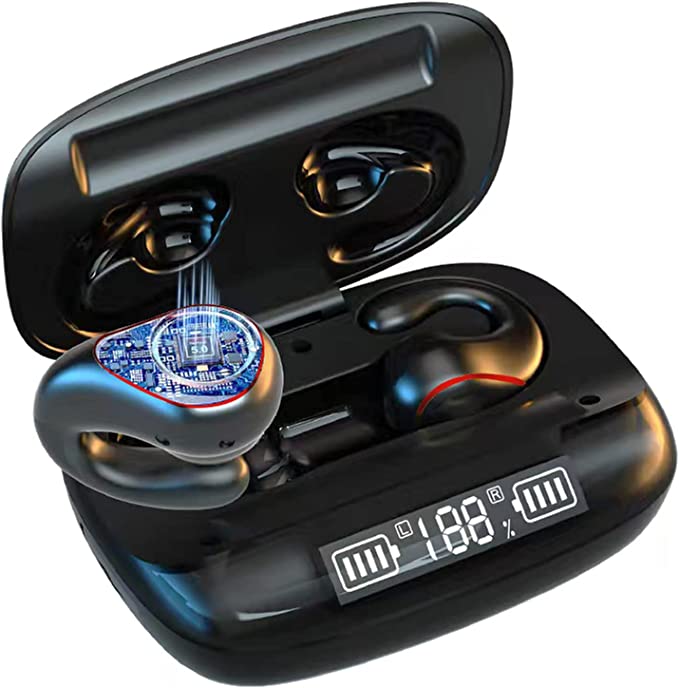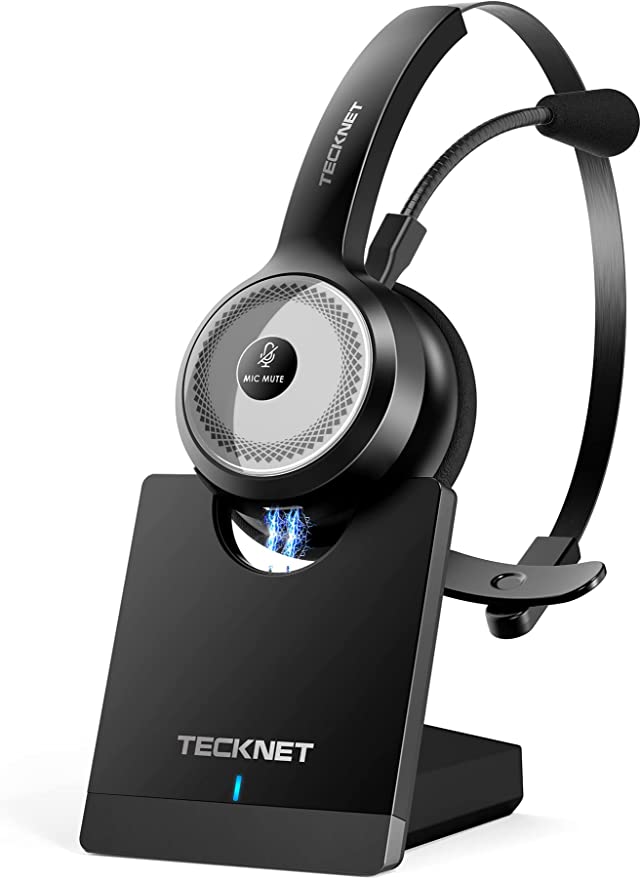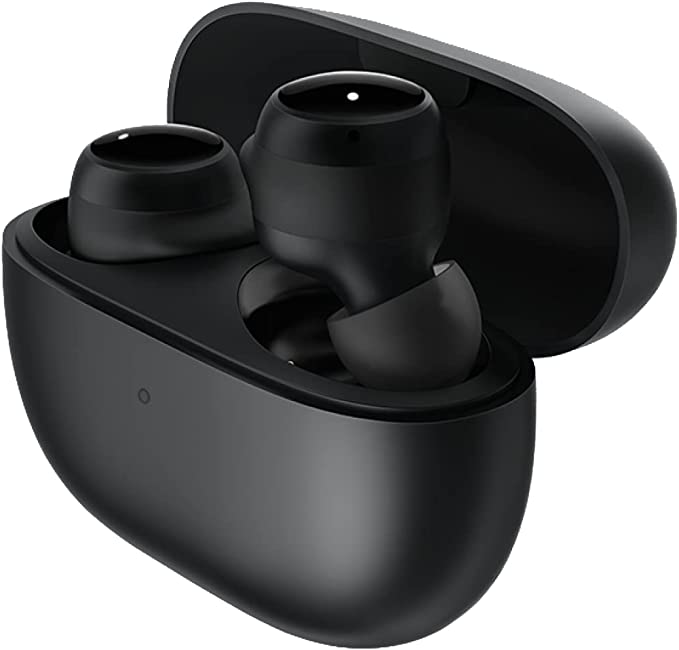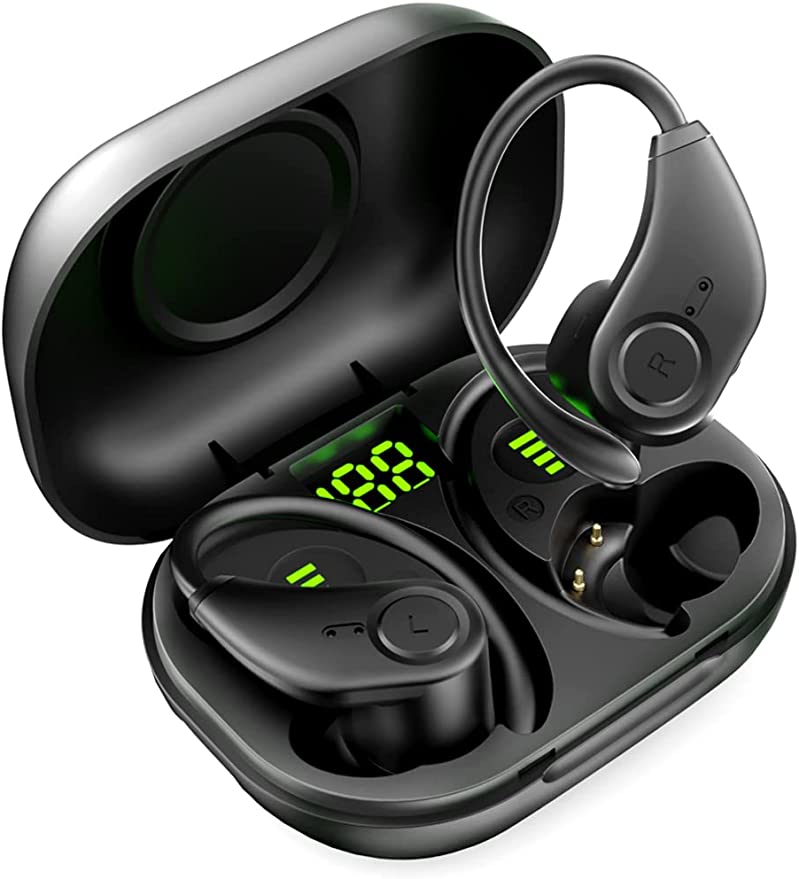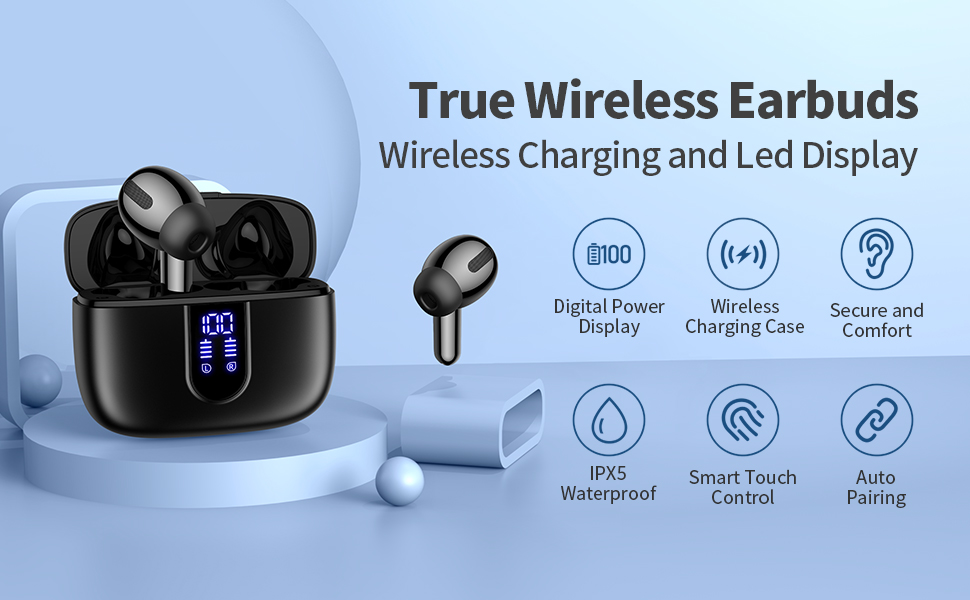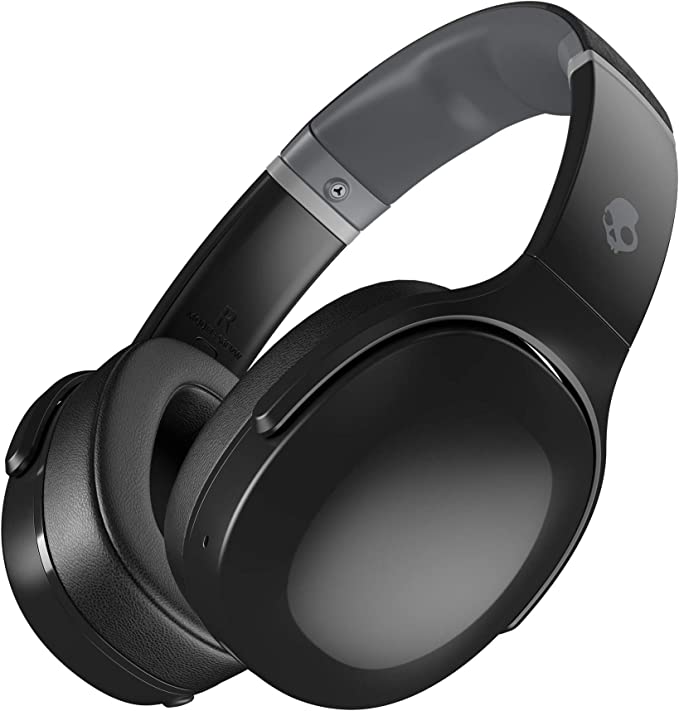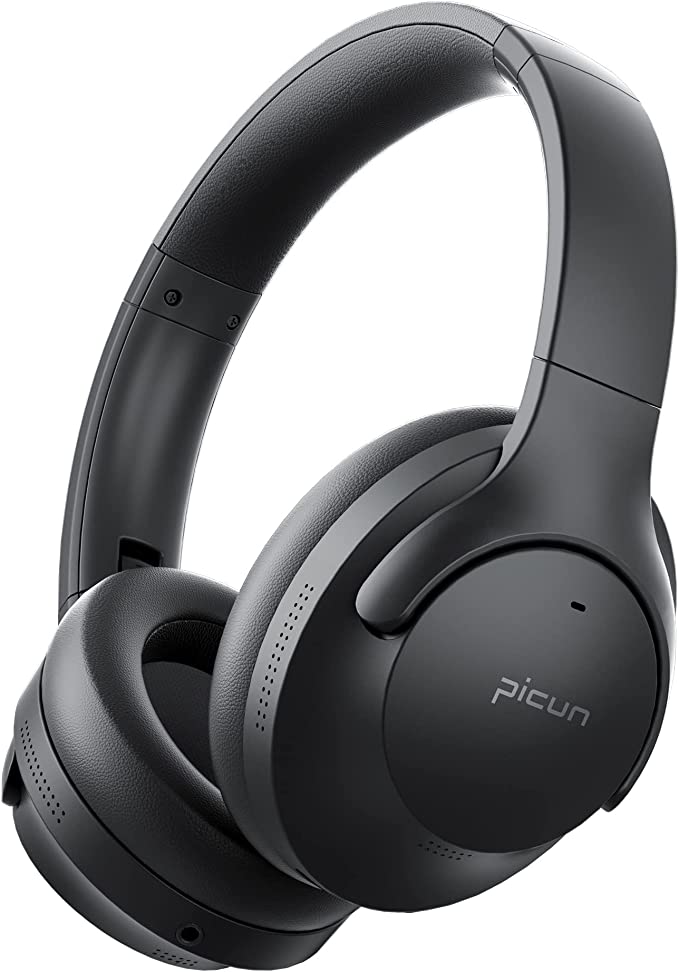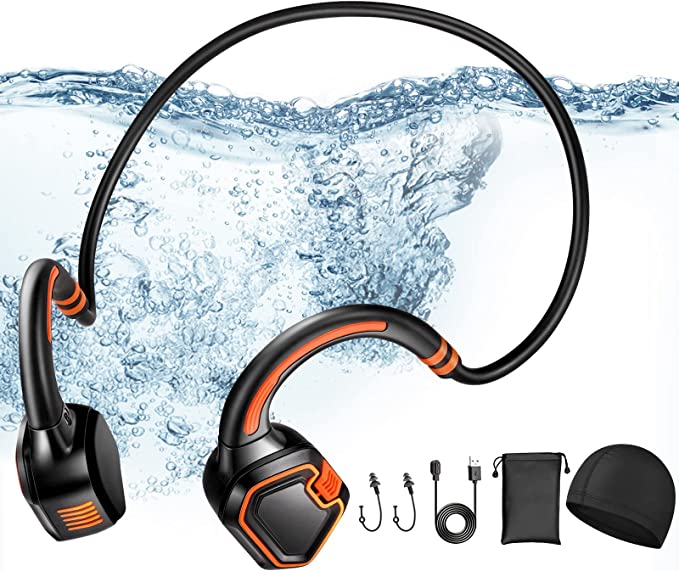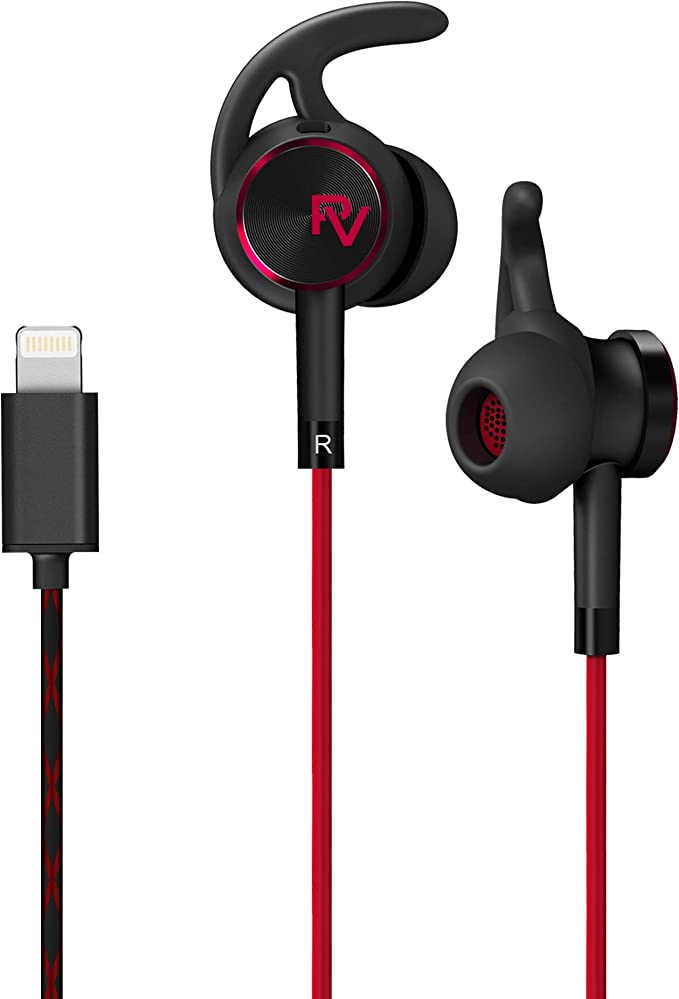Eranova Bluetooth Earbuds: Comfortable Fit and Punchy Sound
Update on May 29, 2025, 11:45 a.m.
In our hyper-connected world, those tiny earbuds nestled in our ears are more than just accessories; they’re portals. Portals to music that moves us, podcasts that inform us, and conversations that connect us. We often take for granted the sheer technological wizardry packed into these diminutive devices. The Eranova Wireless Earphones, for instance, promise a host of features from “Superior HD Stereo Sound” to “ENC Noise Canceling.” But instead of just taking these claims at face value, let’s embark on a more exciting journey. Let’s use these earphones as a lens, a fascinating specimen through which we can explore the everyday science and engineering that shape our personal audio landscape. Consider this your friendly guide to understanding the “how” and “why” behind the technology that’s, quite literally, music to your ears.

The Unseen Symphony: Mastering Wireless Fidelity with Bluetooth 5.1
Remember the not-so-distant past of tangled headphone wires? The liberation offered by wireless audio, spearheaded by Bluetooth technology, has been revolutionary. But it wasn’t an overnight success. Early Bluetooth iterations, while groundbreaking, often struggled with patchy connections, were a notorious drain on battery life, and sometimes compressed audio to a point that would make an audiophile wince.
Enter Bluetooth 5.1, the version powering the Eranova Wireless Earphones. This isn’t just an incremental number change; it represents significant strides in wireless communication. Think of it as upgrading from a winding country lane to a multi-lane, intelligently managed highway for your audio data. One of the key advancements in Bluetooth 5.1 is its enhanced stability and ability to navigate interference. It employs more sophisticated channel hopping mechanisms and improved signal strength detection, meaning fewer frustrating dropouts when you’re on the move or in a crowded café. This directly contributes to a smoother, more consistent listening experience.
Furthermore, Bluetooth 5.1 builds upon the Low Energy (LE) audio protocols, optimizing power consumption. This efficiency is crucial for small devices like earbuds, directly impacting how long you can enjoy your tunes before needing a recharge. It’s a key contributor to Eranova’s claim of a substantial 30-hour total playtime when combined with its charging case. And let’s not forget data capacity. Bluetooth 5.1 offers increased bandwidth compared to its older siblings, allowing for the transmission of higher-quality audio codecs. This is vital for delivering that promised “Superior HD Stereo Sound,” ensuring that more of the original audio detail reaches your ears.
The “Fast Pairing” feature, where the Eranova earbuds automatically power on and connect after opening the charging case, is also a beneficiary of these refined Bluetooth protocols and the efficiency of modern chipsets. While the goal is seamlessness, it’s worth noting that the real world of wireless connectivity is a complex dance of signals and device ecosystems. Occasional minor hiccups, like a momentary connection blip or a rare instance where one earbud might not immediately sync (as some general user feedback for wireless earbuds sometimes indicates), are often due to this intricate interplay, which manufacturers continuously work to refine.

The Heartbeat of Your Music: Understanding the 13mm Dynamic Driver
The soul of any earphone, the component that actually creates the sound waves, is its driver. The Eranova Wireless Earphones boast 13mm dynamic drivers. But what does that actually mean? Imagine a traditional loudspeaker, with its cone, magnet, and coil, then miniaturize it to fit snugly in your ear – that’s essentially a dynamic driver. It works on a classic electromagnetic principle: an electrical audio signal (your music) flows through a voice coil, which is attached to a flexible diaphragm and suspended within a magnetic field created by a permanent magnet. The fluctuating current in the voice coil creates a changing magnetic field, causing the coil and diaphragm to vibrate rapidly. These vibrations push and pull the air, creating the sound waves that your eardrum picks up and your brain interprets as your favorite song.
Now, about that “13mm” dimension. This refers to the diameter of the diaphragm. In the world of audio physics, a larger diaphragm generally has the capacity to move a greater volume of air. This is particularly advantageous for reproducing low-frequency sounds – the bass and sub-bass that give music its visceral punch and warmth. So, when Eranova highlights “deep bass,” the relatively large 13mm driver is a key physical component enabling that. It allows for those satisfying thumps and rumbles without requiring excessive power.
However, driver design is a delicate balancing act. While a larger driver can excel at bass, engineers must also ensure it can accurately reproduce the midrange frequencies (where vocals and most instruments reside) and the sparkling high frequencies that add detail and airiness to the sound. The material of the diaphragm, the strength of the magnet, and the overall acoustic design of the earbud housing all play critical roles in achieving a balanced and coherent sound signature – that “Hi-Fi stereo sound” across the entire spectrum. The driver’s ability to respond quickly and accurately to the audio signal also contributes to the perceived soundstage (the sense of space and instrument separation) and overall clarity.

“Can You Hear Me Now?” – The Art and Science of Clear Calls with 4-Mic ENC
In our noisy world, being heard clearly during a phone call can feel like a superpower. The Eranova Wireless Earphones aim to bestow this with their 4-microphone Environmental Noise Cancellation (ENC) system. It’s easy to confuse ENC with its more famous cousin, Active Noise Cancellation (ANC). While ANC is designed to reduce ambient noise for your listening pleasure (silencing the drone of an airplane engine, for example), ENC’s primary mission is different: it focuses on making your voice clearer to the person on the other end of the call by reducing the noise around you.
So, how does this miniature marvel of acoustic engineering work? The “4-Mic” part is crucial. Instead of relying on a single microphone that picks up everything – your voice and all the surrounding chaos – an ENC system uses multiple microphones strategically placed on the earbuds. Some of these microphones are oriented to optimally capture your voice (think of them as being in a “beam” pointed towards your mouth – a principle known as beamforming). Simultaneously, other microphones are tasked with sampling the ambient noise – the café chatter, the traffic rumble, the office hum.
This is where the algorithmic magic happens. Sophisticated software embedded in the earbuds’ chipset constantly analyzes the signals from all microphones. By comparing the voice-focused signals with the ambient noise signals, it can intelligently identify and significantly suppress those unwanted background sounds. It’s like having a tiny, incredibly fast sound engineer inside your earbuds, isolating your speech and turning down the volume on everything else before transmitting it. The result? The person you’re talking to hears more of you and less of your surroundings, leading to those “clear phone calls even in noisy conditions.”

Built for Your World: The Science of Comfort, Durability, and Interaction
Beyond pure audio performance, how earbuds feel and withstand the rigors of daily use are paramount.
-
The Ergonomic Equation: Lightness and Fit
The Eranova earbuds are touted as “Ultra Light,” with each earphone weighing a mere 0.12 ounces (about 4 grams). This isn’t just a trivial number. From a biomechanical perspective, reducing the mass pressing on and within your ear significantly lessens strain and fatigue, especially during prolonged listening sessions. It’s the difference between barely noticing them and constantly being aware of a foreign object.
The “ergonomic design” aims to follow the general contours of the human auricle, but human ears, much like fingerprints, are remarkably unique. This is why the inclusion of three different sizes of silicone eartips (S, M, L) is so important. Finding the right fit does more than just prevent the earbuds from falling out; a snug seal is critical for effective passive noise isolation (physically blocking some external sounds) and, crucially, for delivering the full impact of the bass frequencies. As some user experiences highlight (like Terry Irwin’s observation about his specific ear shape), achieving a universally “perfect” fit is an ongoing challenge in audio design, making these customizable tips indispensable. -
Braving the Elements: Decoding IPX6 Waterproofing
Life is unpredictable, and sometimes it gets a little wet. The IPX6 rating on the Eranova Wireless Earphones offers a degree of reassurance. The “IP” stands for Ingress Protection, a standard defined by the International Electrotechnical Commission (IEC) to classify the degree of protection provided by enclosures of electrical equipment. The “X” in IPX6 means the device hasn’t been specifically rated for dust ingress under this particular test, while the “6” pertains to water protection. Specifically, an IPX6 rating signifies that the enclosure is protected against powerful water jets from any direction. The test involves blasting the device with water from a 12.5mm nozzle at a flow rate of 100 liters per minute from a distance of 3 meters for at least 3 minutes.
What does this mean in practical terms? Your Eranova earbuds are engineered to handle sweat during an intense gym session, an unexpected downpour on your commute, or accidental splashes. This robust sealing is a testament to careful material selection and precision engineering. However, it’s vital to understand that IPX6 does not mean the earbuds are fully waterproof for submersion, so don’t take them for a swim! -
A Touch of Genius: The Science of Smart Touch Controls
The sleek, button-free surface of many modern earbuds, including the Eranova model with its “Smart Touch Control,” typically relies on capacitive touch sensor technology. Your body is naturally conductive. These sensors create a tiny, stable electrostatic field on the earbud’s surface. When your fingertip (another conductor) comes into contact with this surface, it disturbs or changes that electrostatic field. Sophisticated circuitry within the earbud detects this minute change in capacitance and interprets it as a command – play, pause, skip track, answer call. This technology allows for a more seamless and often more durable design compared to physical buttons, which can wear out or allow moisture ingress over time.

The Unseen Engine: Powering Your Day with Extended Playtime and Fast Charging
All this wireless technology would be moot without a reliable power source. The Eranova Wireless Earphones promise 6 hours of playtime on a single charge, with the portable charging case providing an additional 24 hours – a very respectable total of 30 hours. The unsung heroes here are almost certainly compact lithium-ion (or lithium-polymer) batteries, chosen for their high energy density (packing a lot of power into a small, lightweight package) and their ability to be recharged hundreds of times. Of course, actual real-world playtime can be influenced by several factors, including listening volume (louder generally means more power consumption), the strength of the Bluetooth connection, and how frequently features like ENC are active.
When it’s time to refuel, the charging case utilizes a USB-C connection, which has rapidly become the modern standard for its reversibility and, more importantly, its support for higher power delivery. This enables “fast charge” capabilities, allowing the case (and subsequently the earbuds) to get back to full power relatively quickly – Eranova states 1.5 hours to fully charge the case. Fast charging isn’t just about jamming more electricity in; it involves smart power management systems that communicate between the charger and the device to deliver the optimal voltage and current, which also helps protect the long-term health of the battery. The simple but effective Battery LED on the charging case is a welcome touch, taking the guesswork out of knowing how much juice you have left.
It’s also a practical reality of consumer electronics that components, including batteries and charging mechanisms, have a finite lifespan and are subject to manufacturing tolerances. While designs aim for robust reliability, isolated issues like an earbud not charging correctly (as noted in some general earbud feedback, like Pete C’s observation) can occasionally occur, often due to something as simple as needing to ensure charging contacts are clean and the earbuds are properly seated in the case. Similarly, an earbud failing entirely (like the unfortunate experience Shayla Johnson reported) is a rare but possible outcome, underscoring why warranties and quality control are important aspects of the manufacturing process.
Conclusion: The Harmonious Blend of Science and Experience
Peeling back the layers of the Eranova Wireless Earphones reveals a fascinating microcosm of modern science and engineering. From the intricate dance of radio waves in Bluetooth 5.1 ensuring your music flows uninterrupted, to the fundamental physics of electromagnetism within the 13mm dynamic drivers bringing that music to life with rich bass, and the clever acoustic signal processing of the 4-microphone ENC system that lets your voice cut through the noise – every feature is a testament to human ingenuity. The material science that allows for an IPX6 rating, the ergonomic considerations for a comfortable fit, and the efficient battery technology that keeps the whole show running, all work in concert.
Understanding a bit of the science behind these everyday marvels doesn’t just demystify them; it empowers us. It allows us to appreciate the incredible complexity packed into such small forms and to make more informed choices about the technology that enriches our lives. The world of personal audio is constantly evolving, driven by relentless innovation. So, the next time you pop in your wireless earbuds, take a moment to marvel at the invisible symphony of science that’s making your world sound just a little bit better. Who knows what sonic wonders the future holds?



